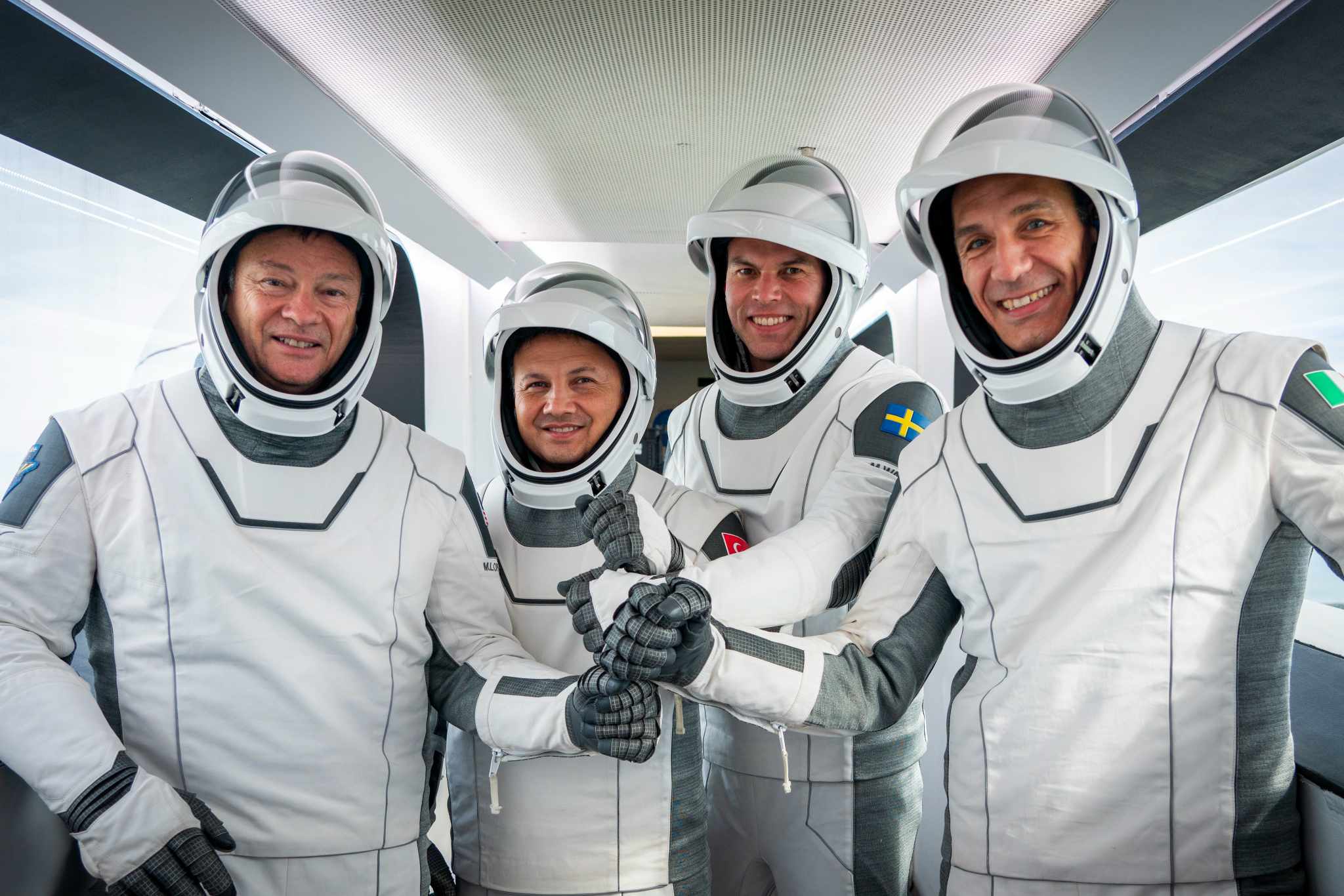
In what has been seen relatively rarely as SpaceX’s Falcon 9 flight cadence continues to ramp up, the four-times-used B1080 booster was put through a Static Fire Test of its nine Merlin 1D+ engines on historic Pad 39A at Florida’s Kennedy Space Center (KSC) last night, ahead of Wednesday’s targeted 5:11 p.m. EST liftoff of the all-private Ax-3 mission to the International Space Station (ISS). Former NASA astronaut, seasoned ISS commander and America’s premier spacewalker Mike Lopez-Alegria will lead a multinational group that includes crewmates from Italy, Sweden and the first national space traveler of Türkiye to spend up to 14 days conducting more than 30 investigations into human health and wellbeing, radiation exposure, genetic expression and Earth observations.
As its name implies, Ax-3 is the third in a series of Private Astronaut Missions (PAMs) between NASA and Houston, Texas-headquartered AxiomSpace, Inc. Contracts for the mission were finalized in March of last year and the four-man crew—Lopez-Alegria, a U.S. astronaut of Spanish heritage, together with Pilot Walter Villadei of the Italian Air Force and Mission Specialists Alper Gezeravcı of Türkiye and European Space Agency (ESA) project astronaut Marcus Wandt of Sweden, who also has Norwegian ancestry—were formally identified in September.
Lopez-Alegria becomes SpaceX’s first frequent flyer, the first person to ride a Crew Dragon to orbit on more than one occasion, having previously commanded the historic all-private Ax-1 mission to the ISS in April 2022. In comments provided at the Ax-3 pre-launch press conference on Tuesday, he shared that the training process for Crew Dragon astronauts has entered a paradigm-shift since Ax-1 from a “less classroom-driven model to a self-study model”, pointing to the “Dragon Rider Handbook” which in a “great improvement” now permits crew members to learn spacecraft systems at their own pace.
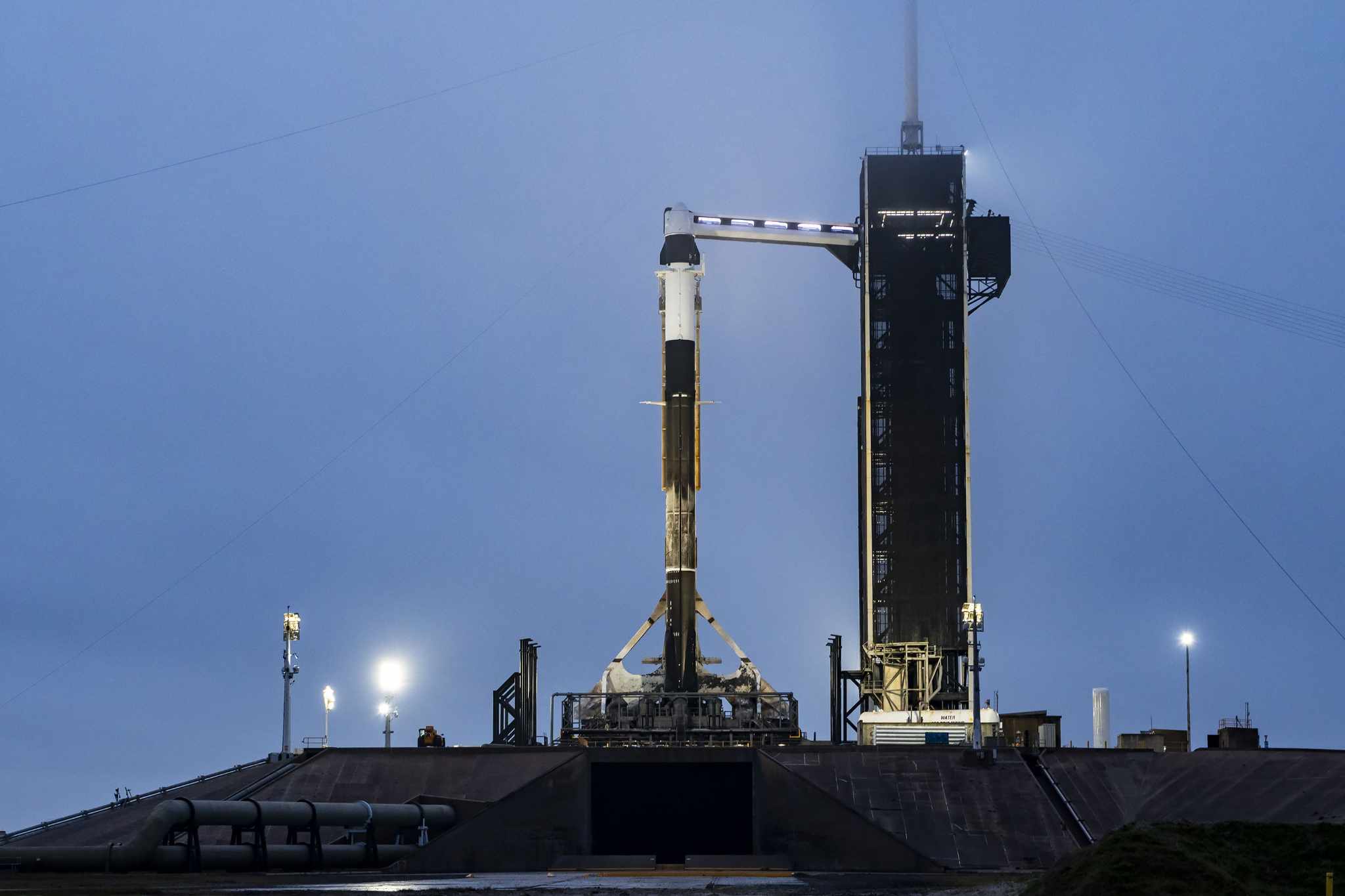
That shift was already in place during training ahead of last May’s Ax-2 mission, for which Lopez-Alegria served as backup commander. He anticipates that the move towards astronaut self-study models will lead to a further smoothening of the training flow as future PAM crews are prepared for flight.
The Ax-3 crew will ride Dragon Freedom, a vehicle which previously supported the six-month Crew-4 increment between April and October of 2022 as well as last spring’s nine-day Ax-2 mission, totaling more than 179 days in space and over 90,000 orbits of Earth. In readiness for its third trek to the ISS, Freedom—whose name honors both the fundamental human right and also Freedom 7, the space capsule flown by America’s first astronaut, Alan Shepard—has received two critical upgrades for this flight: a torquing of joints between the Crew Dragon and the Falcon 9 booster and work on “energy modulators” which connect the ship’s parachutes to their parachute doors.
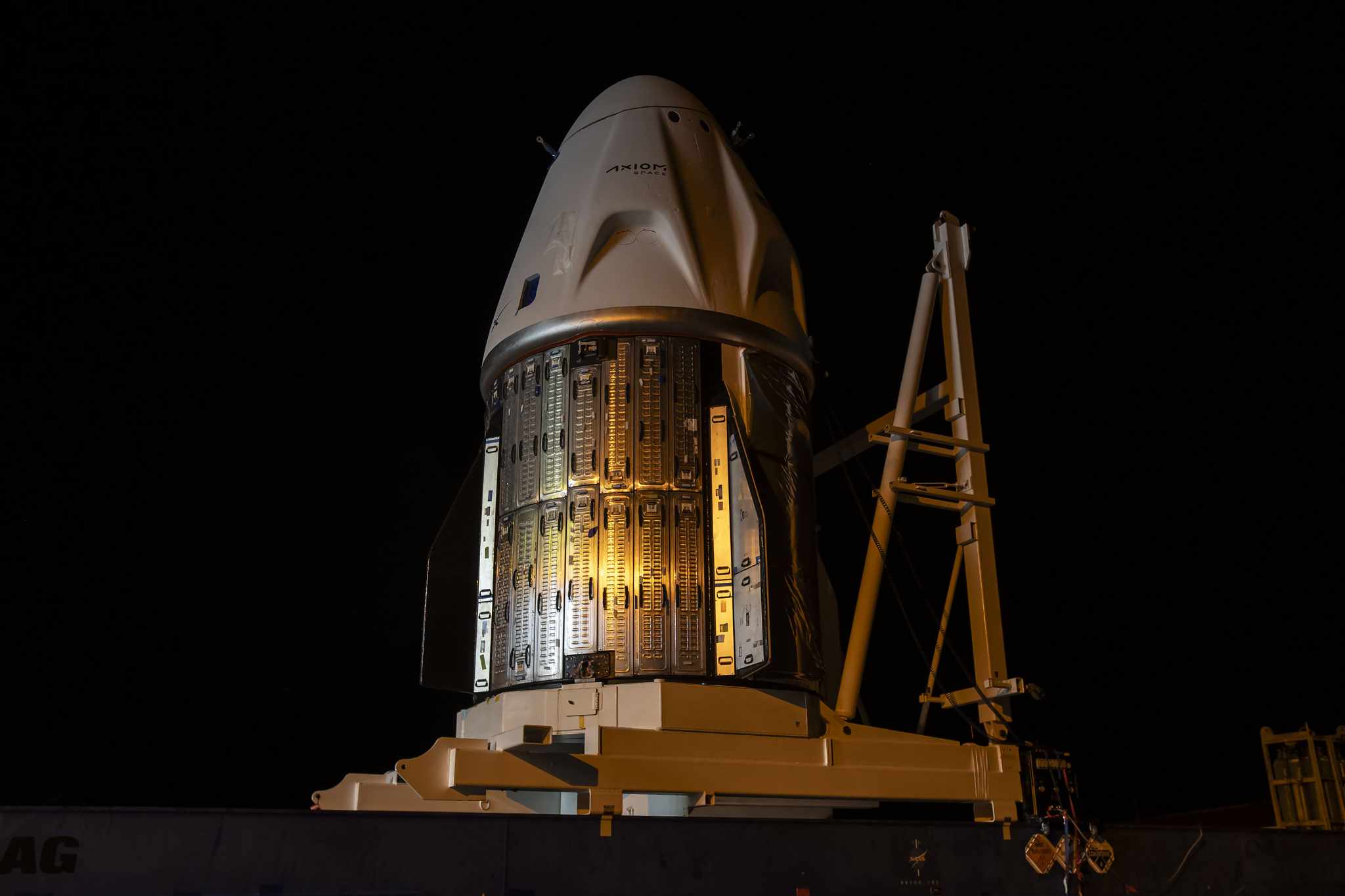
Freedom arrived at the Pad 39A hangar last Friday for integration atop B1080, which will be making her fifth overall launch. The duo previously flew together on last year’s Ax-2 mission, after which B1080 went on to log three more launches between July and October, delivering Europe’s Euclid deep-space observatory uphill and deploying dozens of Starlink internet communications satellites into low-Earth orbit.
Following tonight’s 5:11 p.m. EST launch, B1080 will power the 230-foot-tall (70-meter) Falcon 9 uphill for the opening 2.5 minutes of ascent, before separating from the stack and executing a pinpoint touchdown on solid ground at Cape Canaveral’s Landing Zone (LZ)-1. The single Merlin 1D+ Vacuum engine of the rocket’s second stage will then burn for six minutes to lift Freedom and her multinational space to space, shutting down about 8.5 minutes after liftoff.
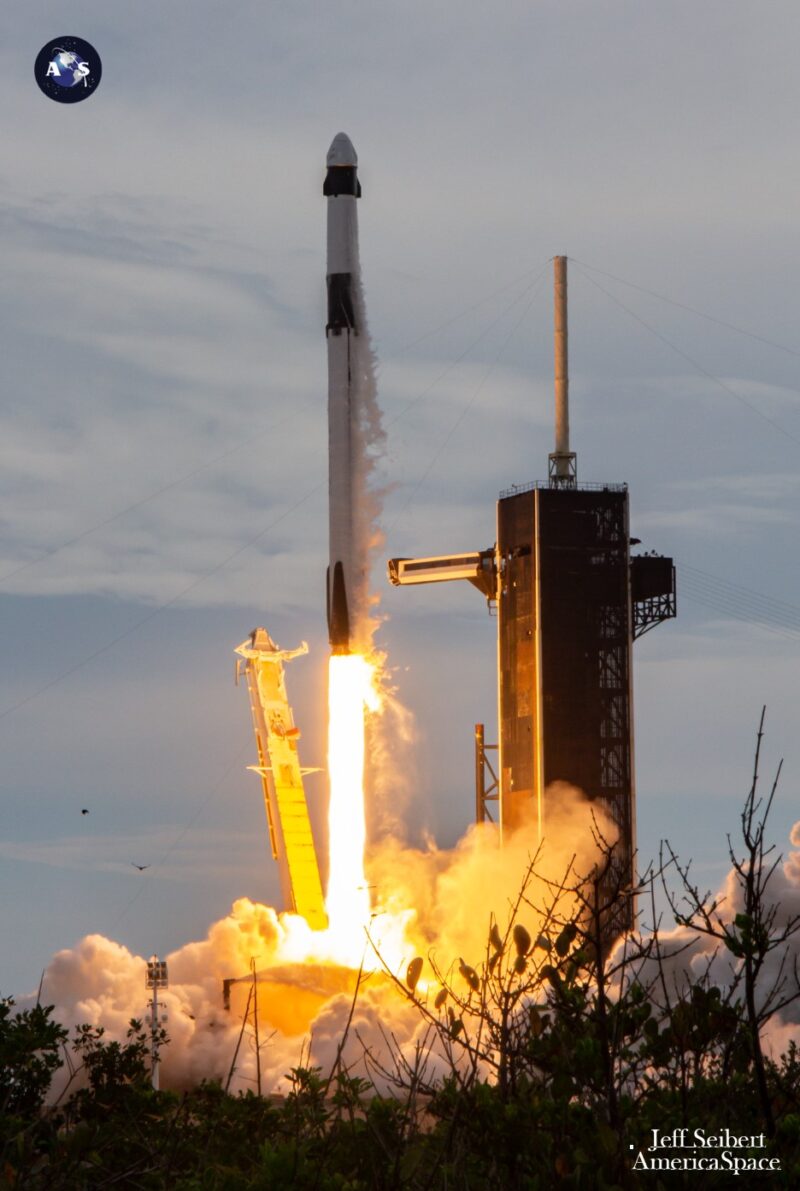
Spacecraft and rocket will part company at 12 minutes into the flight, after which Freedom’s nose cone will open about 50 seconds later to expose her suite of rendezvous, tracking and navigation sensors. Lopez-Alegria, Villadei, Gezeravcı and Wandt will then spend about 36 hours and 24 orbits in free flight, ahead of an autonomous docking at the forward-facing port of the ISS Harmony node at 5:15 a.m. EST Friday.
After standard pressurization and leak checks, hatches will be opened around 7 a.m. EST and the new arrivals will be welcomed aboard by the incumbent Expedition 70 Commander Andreas Mogensen of Denmark, his U.S. crewmates Jasmin Moghbeli and Loral O’Hara, Russian cosmonauts Oleg Kononenko, Konstantin Borisov and Nikolai Chub and Japan’s Satoshi Furukawa. For the next two weeks, the station will operate as an integrated crew of 11 people representing seven sovereign nations—the United States, Italy, Türkiye, Sweden, Russia, Japan and Denmark—plus Spain and also Norway, when one considers Lopez-Alegria’s and Wandt’s ancestral heritage.
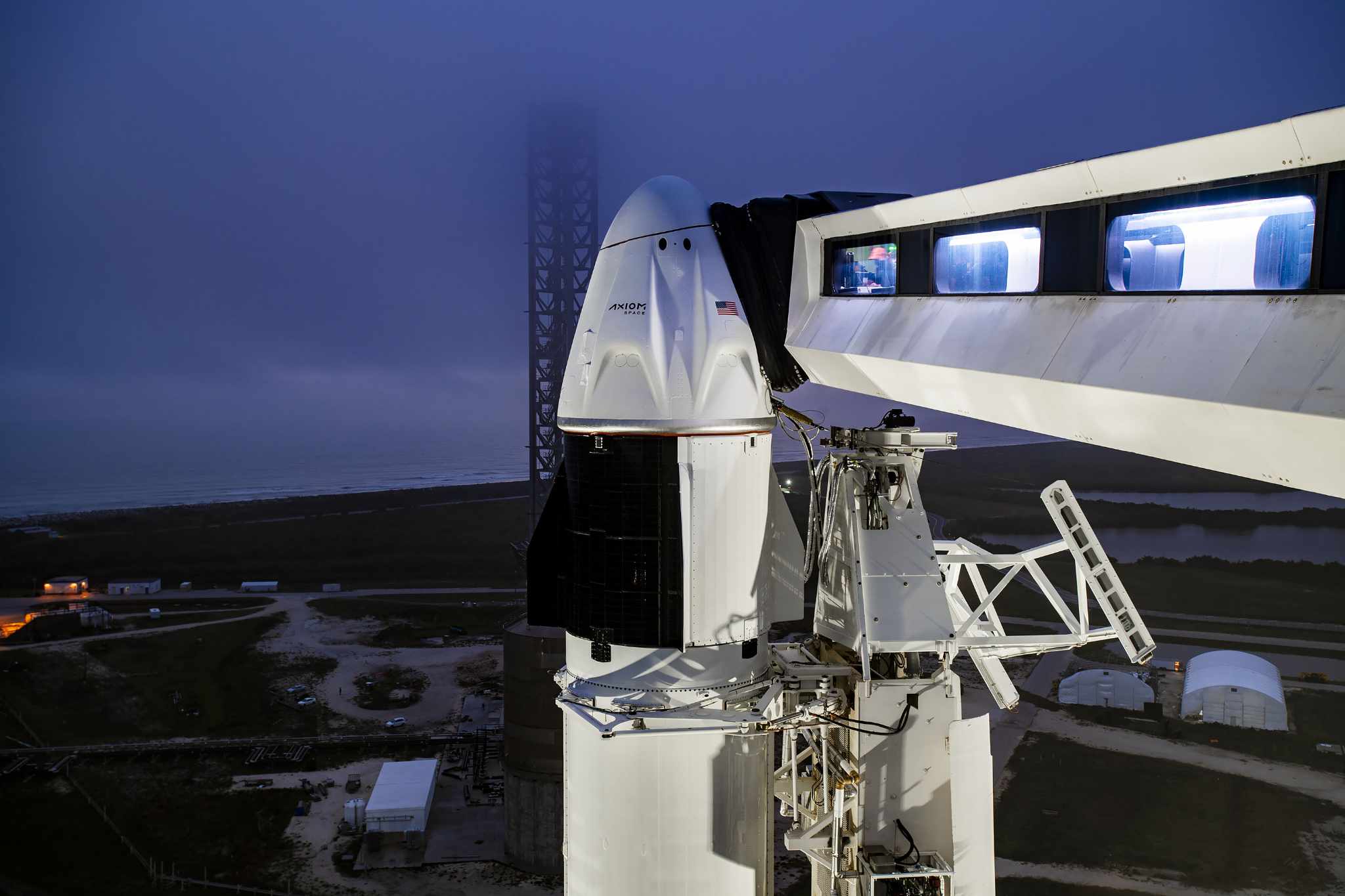
Yesterday, in readiness for Ax-3’s arrival, Mogensen completed On-Board Training (OBT) for the Dragon rendezvous and docking requirements. Meanwhile, O’Hara inspected the airflow in crew quarters, prepared sleep accommodations for the new visitors and cleaned liners and vents where Lopez-Alegria, Villadei, Gezeravcı and Wandt will sleep.
A total of 36 experiments are planned for Ax-3, including 15 from the Italian Space Agency (ASI) and the Italian Air Force, eight from Türkiye and 13 from ESA or the Swedish National Space Agency (SNSA). As part of contractual PAM requirements, a proportion of Lopez-Alegria’s time as Ax-3 Commander will be devoted to NASA-related activities.
Italy’s Ax-3 research complement includes a project to characterize distinctive molecular signatures of circulating biomarkers known to be altered under microgravity conditions, as part of continued work to understand impacts upon human health. Astronauts will study amyloid beta proteins to investigate the prevention or reversal of degenerative conditions such as Alzheimer’s Disease and other experiments emphasize vascular health, physiological adaptation mechanisms to the weightless environment, ovarian cell behaviors and how cognitive skills change over time in space.
A “smart” flight suit equipped with sensors to monitor heartbeat, body temperature and movement, as well as comfort and fabric behavior, will be trialed. Other Italian research includes a muscle monitoring suit with compressional properties to correct fluid shifting and experiments to explore the impact of high-energy radiation particles and the effects of space radiation upon various shielding textiles and materials.
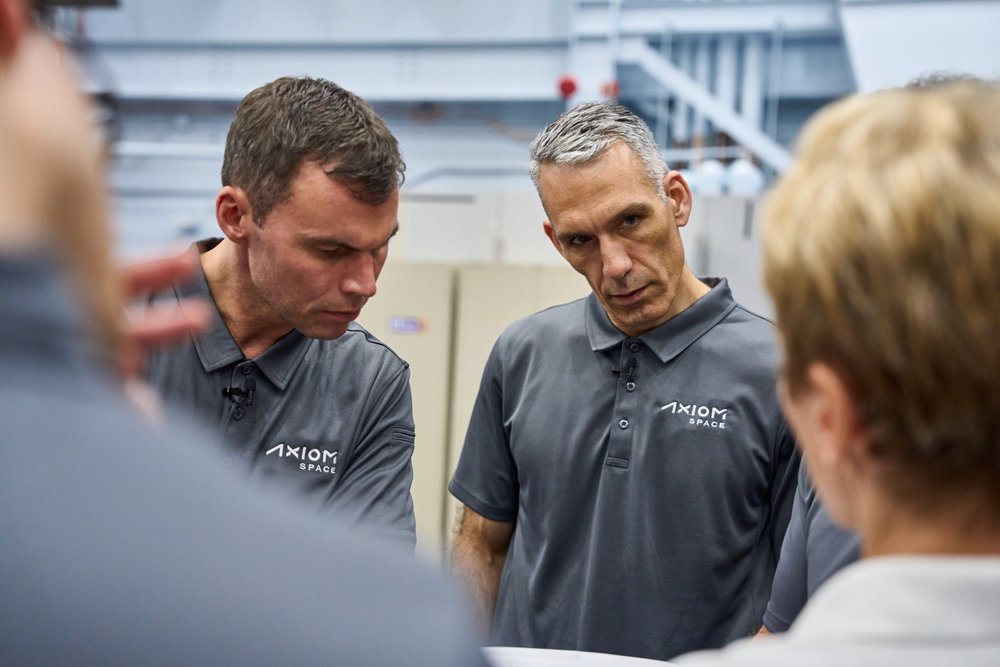
Provided by Türkiye is a wide range of research emphasizing genetic editing methodologies to determine the stress response to microgravity of thale cress (a member of the mustard family), the performance of high-strength, high-toughness and corrosion-resistant Medium Entropy Alloys (MEAs) and High Entropy Alloys (HEAs), the behavior of metallic particles in fluids and the applicability of algae in future life-support systems. A student experiment will examine Propolis extract, a natural product from bees (also known as “bee glue”), which may have uses as an antioxidant and anti-inflammatory agent.
Additionally, ESA and SNSA experiments will explore human bone health, both before and after spaceflight, and will trial advanced Magnetic Resonance Imaging (MRI) brain imaging techniques—such as Diffusion Tensor Imaging (DTI) and resting-state functional MRI (rsfMRI)—to develop clearer perspectives of the health of the brain and central nervous system. Other studies include Cardiovascular Magnetic Resonance (CMR) to assess cardiovascular change in astronauts, the effect of radiation upon DNA repairability, neural stem cell research and sleep behaviors.
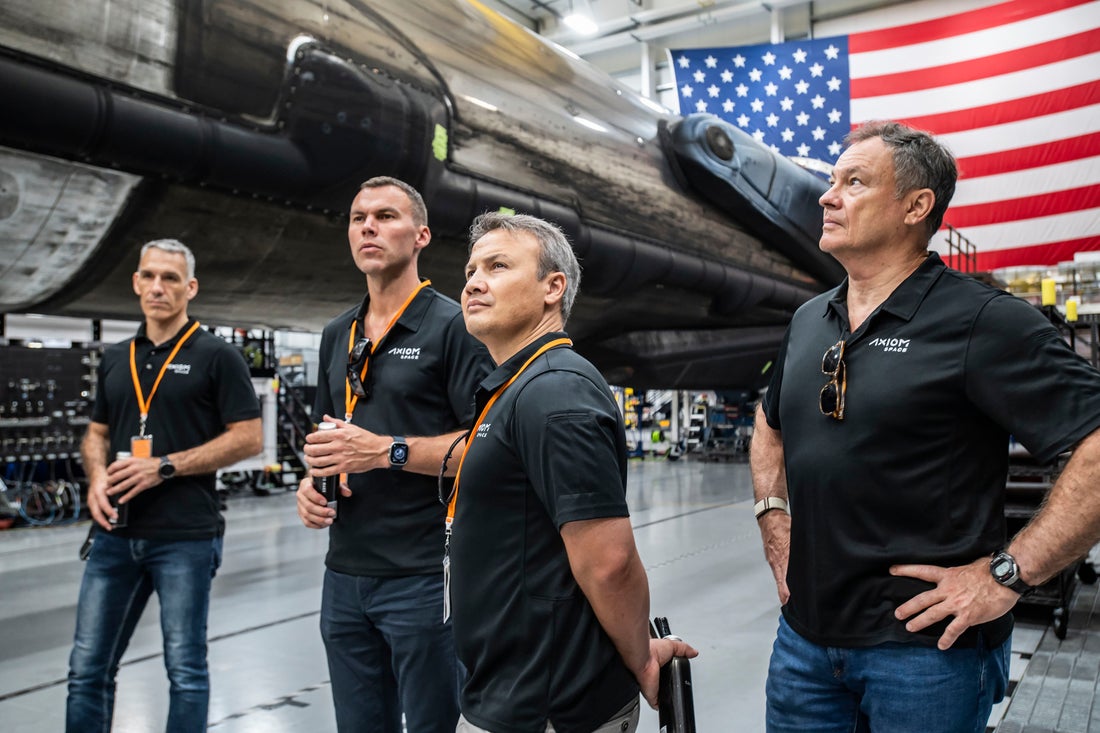
A free-flying robotic helper, the Crew Interactive MObile CompanioN (CIMON) will be put through its paces to execute tasks and respond to verbal commands, a head-mounted virtual-reality tool for on-board training will be trialed and the Thor-Davis camera experiment will image lightning and thunderclouds at up to 100,000 frames per second to ascertain precisely what occurs during strike events. Added to that list, the Ax-3 crew will complete food consumption diaries and Italy is providing a ready-to-heat-and-taste pasta “to develop a broader range of tasty foods in space”.




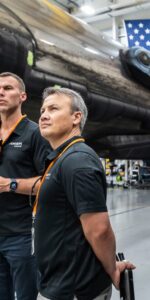
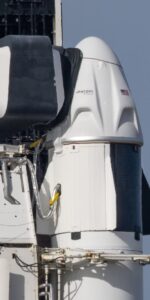
One Comment
One Ping
Pingback:Ax-3 Launches Safely, Heads for Saturday Space Station Arrival - AmericaSpace